(Part One) Examples on Stowing Away the Back Story and Cleaning Up Information Dumps
Which opening is better? This one?
There once was a prince named Erasté in a faraway land called Trevelyan. His father, King Elián Ruelle, was a kind a gracious ruler, loved by all — all but one.
Faeries dwelt in the land of Trevelyan who were mostly good, but among them was one — an evil faerie, robed in red, with heart as black as night — who did not love the king and queen or their son. Auriella was her name, and she loved only one, if love it could be called. She loved a wizard named Solek. Solek, once wise, had fallen into the grip of the black arts, desiring power more than righteousness and blessing on the land in which he lived. And because Auriella admired him, she cast her lot with him, desiring his rise to power as much as her own. She’d been Queen of the faeries of Evensong once, but when they cast her out, and when she formed an alliance to overthrow the reign of King Elián Ruelle, her rule over the faeries came to its end.
But her heart aimed higher than Evensong. For the day would come when Solek would be King, then she would take her place as Queen over the entire land of Trevelyan itself.
But her plan was broken when Solek was taken prisoner and soon received the sentence of death for his treason.
Enraged, Auriella sought recompense. She fought both the king and the prince of Trevelyan, and in her fierce wrath, she slew the king.
Then the prince rose to face her, and though her faerie powers prevented her from being killed, he wounded her, weakening her temporarily. Still, before he could imprison her, she cast one final spell upon the prince and swore that one day her power would return double-fold. She vowed this oath: “Never again shall a king rule in Trevelyan!”
Or what about this?
Erasté, Prince of Trevelyan, trembled as he knelt beside his father. Beneath his knees, the life of King Elián Ruelle bled into the trampled earth. Clenching the hilt of his sword, his body shuddering, the prince forced himself to his feet and raised his head to face the faerie queen. His chest rose and fell as slowly the sorrow seeped out and in its place stretched rage. Fire burned in Erasté’s belly, consuming the anguish. “The king is dead.” The knot in his jaw quivered.
The faerie laughed, tossing her head sharply, her ribbons of coiling, jet hair glistened. “Yes.” Her transparent black wings shimmered, and her voice slithered out in a hiss. “At last Solek is avenged.”
Prince Erasté gritted his teeth and lifted the tip of his sword. Wisping robes of red and black chiffon swirled around the dark-skinned enchantress. Erasté moved away from the fallen form of his father and stepped nearer the faerie. “You dare to avenge evil? Justice was served, as you know full well.”
Her lips twisted in mockery. “Justice has only now been meted out.”
“Solek was an evil man, and my father dealt fairly with him. The wizard would have lived had he not been, at heart, a fool.”
“He was shrewd. Your father murdered him because he feared Solek’s greater wisdom. Neither you nor your father could deny that Solek would have one day become one of the Great Wizards.”
“Murdered.” Erasté spat the word, stepping even closer. “The people of the kingdom cried for Solek’s blood. He brought condemnation upon himself by his foul deeds and reaped the penalties accorded by our law.” His fingers tightened on his sword. “And you are no different than he. Created with your gift, you have used it for darkness. Now you call Solek’s wise, as if toying with the black arts as he did could ever be called such. You are wrong to mistake cunningness for wisdom.”
His gaze stroked the fallen form of the king once more. Enough of this senseless debate, enough of this evil one’s deceits!
The force of his anger swept over him. His voice lifted and rang through the towered halls. “You, too, Queen of Night, shall be served the fate you deserve.” He swung the blade at the dark faerie, cutting without a shred of mercy into her flesh and tearing apart a shimmering wing.
She stumbled and dropped to the ground, clutching her wound. The tears of grief Erasté had denied himself earlier now spilled out in silent streams over his jaw, and he raised his sword again to finish her.
Blood ran from her side, yet her cruel gaze fluttered up at him. Guttural laughter scraped from her throat. “Do not be so hasty with your threats, oh whimpering prince.”
He faltered. The hand bearing the sword jerked.
“You know you cannot kill me.”
Her words struck him. Hideous truth! She would not die. He could do her no lasting harm. In the great strength of her faerie power, a mere sword stroke could not break the hold of her immortality.
She laughed again as the horror of his comprehension washed over him. The blood on the scarlet edge of his blade vanished as he held it, and the sword began to quake in his hand.
Thoughts raced and his temples pulsed. Then his reeling mind found focus, and the hard gaze he leveled at the fallen queen brought her to silence. Again he put the tip of the sword to her throat. “It may be I cannot kill you now.” He glanced at the blood flowing from her side, sogging the silk of her gown. “But I see you are weak, and that is to my advantage.” Confidence grew as he made his pronouncement. “Therefore, I banish you, Wicked One. I resign you to a living death.”
Her hand shook, but she pushed aside the blade and shot a finger at him. “You do not recognize your boundaries, foolish Prince of Nothing. If you had been half so wise or just as you claim your father was, you would understand your peril, and you would restrain yourself. But you have sealed your fate, and I find it nearly as delightful as your death. For I tell you this day, even as your fetters may bind me, never again shall a king rule in Trevelyan!”
The second example obviously is longer, but let’s understand why and also what makes this a better beginning as we take a closer look at the details.
The first example has a nice flow to it in an old-fashioned story-telling way. It’s much the way some of our fairytale classics have begun. Unfortunately for any of us who learned to write using this style and are engrained with the habit, it’s not the style we want to use anymore.
Example #1 is written with the overwhelming use of back story. Back story is information given that happened before the current point in the story. It’s historical information or character information. You might just think of it as background. It might be important to know, but it should never be given in an information dump like I did in the first example. That’s just a lot of telling, telling, telling.
But in the second example we go from telling to showing. From dumping, to letting the characters own actions and dialogue inform.
In the second example we are no longer stuck in back story but caught up in immediacy. We see the history taking place. We are given character, action, and dialogue to understand the things we need to know.
Information dumps usually involve big blocks of print without any dialogue. You can pour out a lot at once, but it still feels like mud sucking at your shoes when you read through it.
By contrast, when keeping things in the immediate, the reader is buoyed along on the growing conflict and they begin to develop an emotional bond with the characters. A writer can’t pour out words in a lump this way, of course. We can’t hurry up and rush our writing. But think about this for a moment: beginning writers often complain of having trouble “filling” their stories. They desire a longer word count, but don’t know how to get one. Yet, if a scene is un-spun carefully without dumping information, word count takes care of itself.
The scene naturally grows longer, as in the second example above, when it isn’t given in an information dump.
Everything I’m saying holds true for any point in a story. But it’s in the beginnings writers are most apt to dump in back story. That’s because you know your characters’ histories in your head, and you’re afraid readers won’t “get it” if you don’t explain those histories right up front. BUT, you have to dish out information in small amounts, not in big, inky paragraphs. You have to trust your readers to figure things out from there.
You can’t try to give a reader everything they need to know right in the beginning anyway. That’s why you are weaving it into a story. It has to slowly unwind.
The example above is from my work in process titled Trevelyan. The sub-title is A Tale of Beauty and the Beast. Could you tell it was that old fairytale? Probably not. That’s because I didn’t dump any of that telling stuff on you. I’d trust you to figure it out as you go deeper into the story.
Exercise:
- Look at the first five pages of your WIP. Do you open with background information that can be leaked in bit by bit through later dialogue or in a few words here or there? Is there another way to eek out the back story, bit by bit?
- Now go through the rest of the manuscript. Are there other places where characters are introduced and you’ve suddenly given their life histories? If so, cut those histories out. Find a better way to reveal that “Aunt Penny had been married six times, and each time another one of her husbands passed on, she ended up with two more kids.” Maybe throughout the story we gradually find out that cousins Horton and Hephzibah have a different last name than Gertrude and Gwen, and that Frankie and Fern are the only two with freckles and cleft chins. Eventually, we begin to realize that Aunt Penny has been married a number of times. We discover things about her in a natural way, rather than having her past dumped on us in a pile of words.
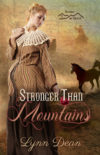
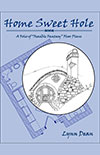

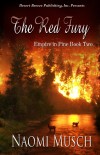

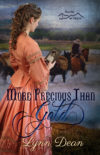
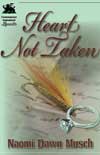

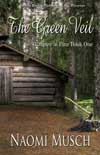







Speak Your Mind
You must be logged in to post a comment.